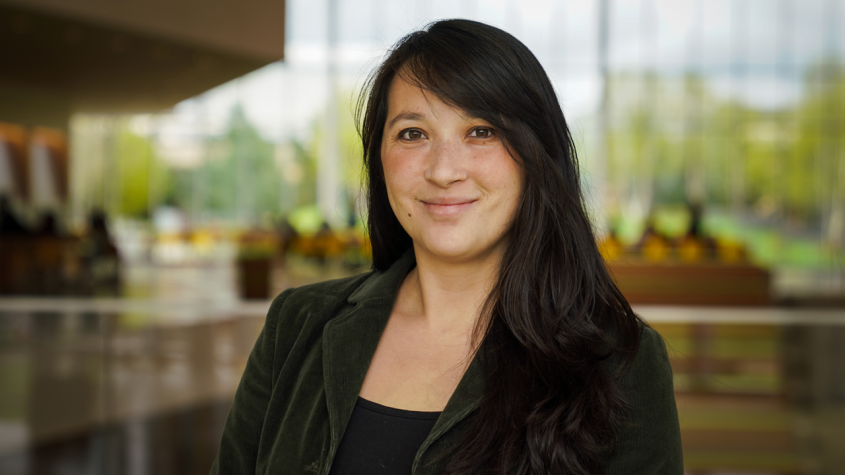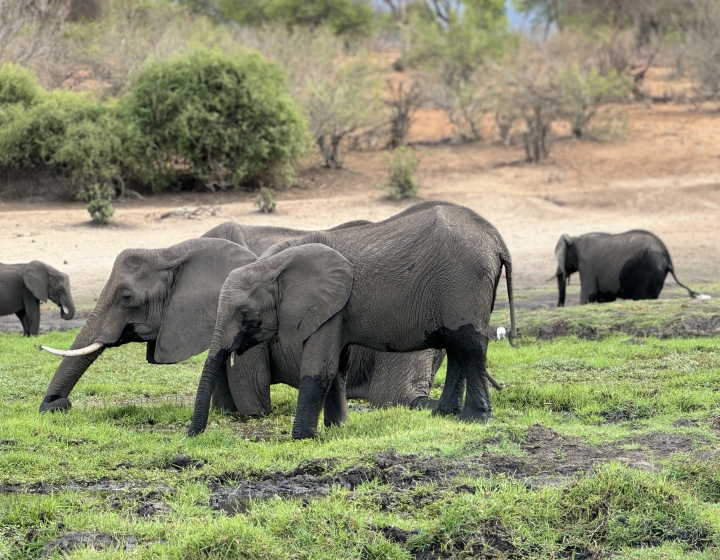New faculty profile: Dr. Stephanie Hon
The Cornell University College of Veterinary Medicine has recently welcomed many new faculty members to our academic departments, each one bringing a unique set of skills and experience that enriches our college every day. In this Q&A series, you'll get to know their interests, expertise and more.
Dr. Stephanie Hon, assistant professor, Department of Clinical Sciences, Section of Anesthesiology and Pain Medicine in the Cornell University Hospital for Animals
Q: What has been your path leading to Cornell?
I studied at Harvard University for my undergraduate degree, where I concentrated in East Asian Studies. I really enjoyed traveling and spending my summers between Shanghai, Hong Kong and Beijing. Polo was my other passion outside of travel, and I was the captain of the Harvard Women’s Polo Team. I decided to marry my pre-med background with my love of horses, and I pursued veterinary school instead of medical school. I completed veterinary training in my home state at the University of Florida, and I ultimately did my internship at Rood and Riddle Equine Hospital before matching to Cornell University for my residency and staying on as faculty.
Q: What drew you to CVM?
Cornell was my top choice for residency as it has a strong track record of producing clinical researchers. I had gained a passion for translational research, especially with pigs. The large animal hospital, particularly, was known for creating both great clinicians as well as innovative researchers. I also loved that Cornell was a family-oriented institution, and there were many successful mentors available who also valued family.
Q: What is your clinical or scientific area of expertise?
While our anesthesiology team services both the small and large animal hospitals, my area of interest is pigs. I have a great personal investment in improving care for our growing, robust pig caseload, as finding customized care for this species can be a challenge for owners. Along with clinical work, my research is focused on the creation, management and improvement of pigs as a translational model. We have many ideas in the pipeline, and we are excited to share these results as they come to pass.
Q: What drew you into this area? Any specific experiences, mentors or influences that helped guide you?
I had an early experience with military medic training, where I was drawn to the relatively quick process that encompassed idea generation, design and implementation, with ultimately lifesaving outcomes. From my resident interview at Cornell and beyond, Dr. Jonathan Cheetham was instrumental in fostering my interests in research and the logistics of how to align this interest with my clinical training. Dr. Susie Fubini and Dr. Lisa Fortier were my clinical and research advisors during my initial years at Cornell, and as a woman entering her career, I gained immense insight into career and life navigation from them. I was very lucky to have strong support at every step in the process and mentors who were open to helping me find my love and niche in the field.
Q: What past professional work are you most proud of and why?
I am very proud of the improvements in clinical care for pigs during my time at Cornell. When I first arrived, the pigs were limited by technical challenges and their behavioral nuances compared to other species, and it was very difficult for clients to find routine or advanced care for their pigs. These owners are a dedicated cohort, and this caseload has largely grown by word of mouth, especially among those with social media presence. It feels very rewarding to make a difference for these clients and to know that the research done with pigs outside the hospital setting also can be used to innovate and refine care for companion pigs, in addition to providing important translational medicine impacts.
Q: What about your clinical work, research or teaching innovations are you most excited for or proud of, and why?
This year I am transitioning into the role of residency director for our section, and I am excited to bolster the practice readiness and emergency training of our program. We are producing many residents who go on to work in private practice, and it is helpful for this growing cohort to stay in touch with networks of other graduates who are now practice owners or who have navigated the private practice market.
Q: What impacts or applications do you hope to see your work have on the world or on human, animal or planetary health?
Pigs are a common animal model for translational research, and popular news has even highlighted pigs as a possible solution to major problems, like organ availability. I hope to help researchers access these models more easily and also to help them benefit from the advanced research being done to improve clinical care of companion pigs.
Q: What clinical or scientific questions are you looking to answer next, or areas you plan to explore?
We will be exploring drug dosing with long-term subcutaneous catheters and wearable pump devices next; it can be a challenge for pigs to maintain intravenous catheters and multiple injections into a muscle can be behaviorally difficult for them—a wearable pump device would allow for a technically easy way to deliver high quality pain medications despite these challenges. We will also be looking at new, reversible pain models to help make future pain studies more objective, so that we can better test new pain control medicines or techniques. We hope to simultaneously investigate new methodologies for locoregional techniques in pigs and other management techniques in order to reduce stress and improve quality of care.
Q: What’s something most people don’t know about you?
Our family loves to go see the minor league baseball games (Syracuse Mets) in the summer! Our favorite day is kids run the bases or the summer time fireworks.
Q: What’s the best part of being a clinician or scientist?
Both of these roles allow me to use my career learning and skills to help others. I feel incredibly fulfilled knowing my skills were essential to help an animal, give a client a good outcome or complete a research project that has positive impacts on pig management. I feel this element of noble cause is a special part of our job.
Q: What’s the most challenging part?
As a clinician and scientist in an institution at the forefront of the field, it is difficult to retain humility, stay grounded and share in each other’s mistakes. If we collectively stay kind and approachable, the community advances more swiftly as a whole, as we can learn not just from each other’s successes but also from each other’s failures. I believe it is very important to demonstrate to upcoming students that it is admirable to build teams where strengths are collaborative. My mentor at Rood and Riddle Equine Hospital often said, “Type A people hire Type A people; Type B people hire Type C people because they are insecure, and the entire team structure suffers.” That advice has lingered with me.
Q: What are the benefits of working at CVM? At Cornell?
Cornell has a unique combination of a robust research environment alongside a high clinical caseload. We have a strong core of large animal hospital faculty, and our large animal group is very cohesive and collegial across specialties. I think the next 10 years will be an especially exciting period of growth for our large animal model development.






